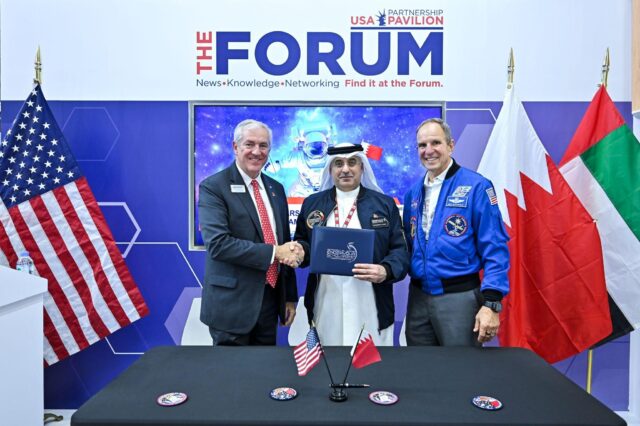Hawaii ANG F-22A Raptors to receive Thales Visionix Scorpion helmet-mounted cueing system
March 7, 2025

Remarkably, the USAF’s most agile fighter has lacked a helmet mounted sight since it entered service, leaving it unable to fully exploit the off-boresight capabilities of the AIM-9X, and leaving F-22 pilots unable to update their navigation systems via sightline. Integration of the USAF standard Vision Systems International (VSI) Joint Helmet-Mounted Cueing System (JHMCS – pronounced ‘Juhammicks’) was judged impractical because of the tight confines of the Raptor’s narrow canopy, while there were also reportedly real problems in ‘mapping’ the Raptor cockpit – which would have been essential to ensure accurate ‘head tracking’.
The USAF’s 422nd Test and Evaluation Squadron first evaluated the Thales Visionix Scorpion helmet-mounted cueing system on the Lockheed Martin F-22 Raptor at Nellis Air Force Base, Nevada, during 2014. The Scorpion is a ‘lower profile’ design than the JHMCS or the F-35 helmet, and was judged to be compatible with the F-22 cockpit, but funding was not forthcoming, and the Raptor remained without a helmet sight.
Finally, in September 2024, the Defense Innovation Unit (DIU) placed an initial $1.6 million Other Transaction Authority (OTA) contract with Thales Defense & Security Inc. (TDSI) for integration and development testing of F-22 specific upgrades for its Scorpion Helmet Mounted Display (HMD). The contract was placed under the DIU’s Raptor Open System Tactical-Helmet Display (ROST-HD) programme, in partnership with the National Guard Bureau.
The modular architecture of Scorpion enables low cost technology insertion to ensure that it can be optimized across platforms for the evolving fighter aircraft environment.
Jim Geraghty, the Vice President of Visionix observed that: “It’s highly customizable allowing each platform to maximize capabilities to its unique system architecture. Partnered with DIU we are proud to advance HMD Technology and assist the US Air Force in achieving an advanced HMD solution for F-22 pilots.”
The Helmet Mounted Display Interface Development contract will see TDSI working with government and industry partners including DIU, the F-22 System Program Office, ACC Federal Lab, the US Air Force’s 309th SWEG (Software Engineering Group) and Lockheed Martin IFG (Integrated Fighter Group), to create an HMD based Pilot/Vehicle Interface (PVI) for the F-22, which previously had no HMD capability.
The HMD based PVI will allow the F-22 pilot to view symbology and interact with F-22 mission systems through the HMD. This will leverage Scorpion’s advanced design and the Raptor’s own Open System Architecture.
Thales Visionix, a division of Thales Defense & Security, Inc., was contracted to provide initial Scorpion HMD hardware to support Systems Integration Lab (SIL) development as well as providing cockpit installation definition.
The Scorpion HMD will provide F-22 pilots with state-of-the-art HMD capability (within the limitations of its monocular near-eye configuration) and will allows pilot to receive situational awareness (SA) information to the pilot who will maintain visual awareness of his or her surroundings.
Scorpion provides enhanced SA with full colour symbology and a single display for both day and night operations at a substantially reduced life cycle cost.
















